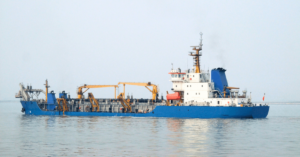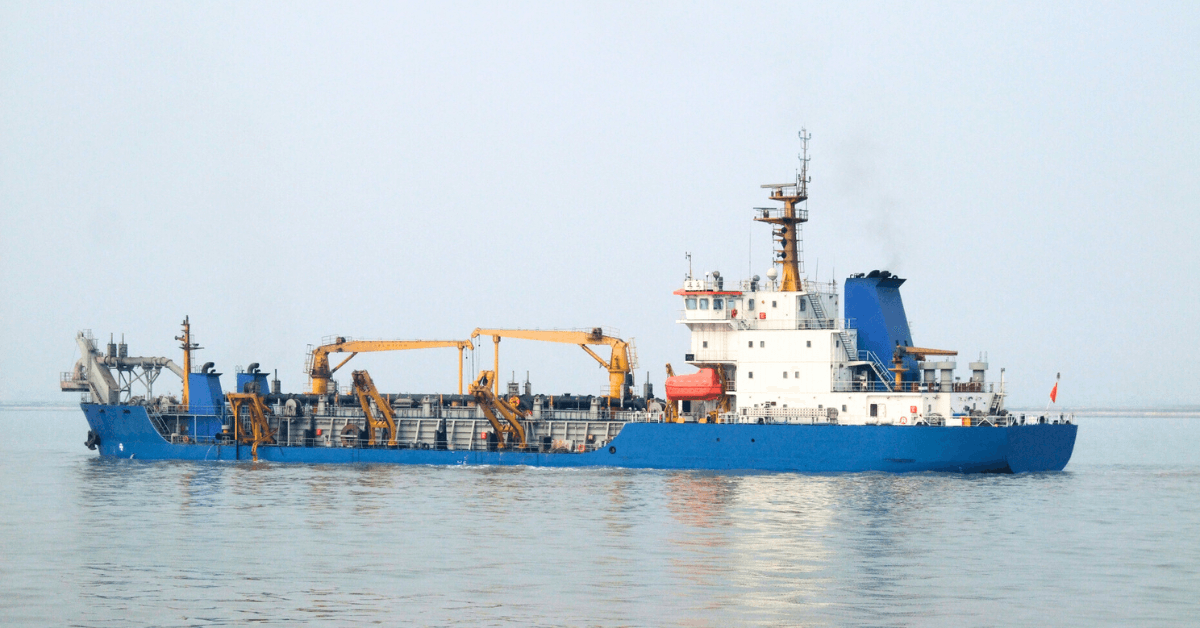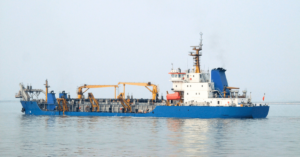
Royal Navy Bids Farewell To Last Cold War-Era Submarine After 34 Years Of Service
December 16, 2024
Oil Spill Reported In Kerch Strait After 2 Russian Oil Tankers Damaged In Powerful Storm
December 16, 2024

The Philippine Coast Guard (PCG) has accused the China Coast Guard (CCG) of tampering with automatic identification system (AIS) data to mislead the international community, and confuse authorities.
AIS spoofing is when the automatic identification system (AIS) data is intentionally falsified to deceive monitoring systems. Spoofers can mislead or create dangerous situations by broadcasting false information, such as altering a vessel’s position, speed and identity.
Commodore Jay Tarriela, the PCG spokesperson for the West Philippine Sea, presented evidence of this activity during a briefing on Friday, December 13, in Manila.
Tarriela said the AIS track of the China Coast Guard vessel 21543 was analysed over 60 days, and it was found that the vessel appeared in impossible locations such as Manila, Zambales, China and South Africa within short periods.
He claimed this was a clear case of AIS spoofing, where vessel signals are manipulated to deceive others.
The issue was first reported on December 10, when residents of San Felipe, Zambales, noticed a China Coast Guard vessel near a dredging site through a marine tracker.
Concerned citizens informed the Philippine Coast Guard about the sighting, after which they immediately dispatched the patrol vessel, BRP Teresa Magbanua, to investigate.
Upon reaching the area, the PCG detected five vessels through AIS signals, including the China Coast Guard 21543, three Chinese-flagged dredgers, and one dredger flagged in Sierra Leone.
However, after physically inspecting the area, Teresa Magbanua only found the three Chinese dredgers.
The PCG boarded one of the dredgers, which has a mixed crew of Chinese and Filipino nationals, but reported that all licenses and documents were in order. The other two dredgers were not inspected.
Tarriela said it is possible that the dredgers are being used to support AIS spoofing activities for the China Coast Guard. He explained that AIS spoofing is a violation of international law, specifically under the International Convention for the Safety of Life at Sea (SOLAS).
“It is evident that the Chinese Coast Guard is engaging in AIS spoofing to mislead the international community, confuse authorities, and instigate public concern,” Tarriela said.
He added that PCG plans to intensify inspections of all dredgers operating in Manila Bay and nearby areas to ensure compliance with maritime regulations.
China has rejected the accusations, calling them propaganda. Chinese authorities claimed that the Philippines is provoking incidents by entering Chinese waters and reiterated their stance on protecting their territorial sovereignty.
Just days earlier, Chinese vessels reportedly used water cannons and bumped a Philippine Coast Guard ship in another clash.
The South China Sea dispute remains a contentious issue, with both the Philippines and China asserting overlapping claims. While China bases its claims on the “nine-dash line” the Philippines relies on the United Nations Convention on the Law of the Sea (UNCLOS), which recognises the country’s exclusive economic zone (EEZ).
The Department of Foreign Affairs (DFA) is currently working with the PCG to investigate the activities of the Chinese vessels. However, it is unclear if the DFA will file a diplomatic protest.
The PCG has assured the public that it will closely monitor all vessel movements in Philippine waters and provide updates as necessary. Tarriela also discussed the importance of addressing AIS spoofing which he described as a threat to maritime safety.
References: The News Mill, Manila Bulletin
Source: Maritime Shipping News


